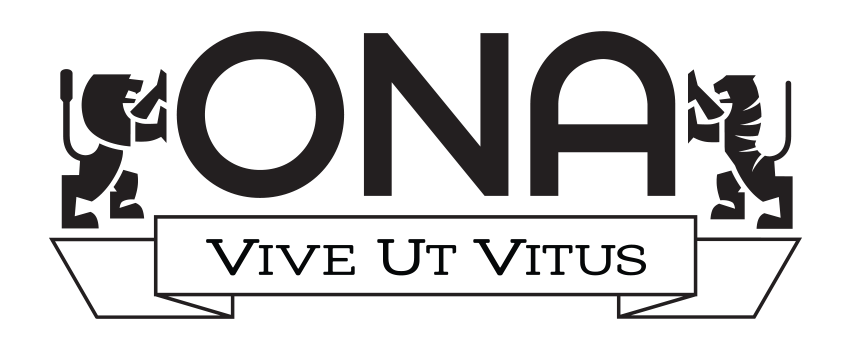At Ona Treatment Center, we’ve seen firsthand the transformative power of holistic healing prayers. These practices can profoundly impact mental, physical, and spiritual well-being.
In this post, we’ll explore the science behind prayer’s effects on health and share practical techniques for incorporating holistic healing prayers into your daily life. We’ll also discuss how these practices can complement conventional medical treatments for a truly integrated approach to wellness.
How Prayer Heals Mind, Body, and Spirit
The Science Behind Prayer’s Healing Effects
Recent scientific studies have illuminated the tangible benefits of prayer for health. A study published in the Journal of Religion and Health found that regular prayer practitioners experienced lower levels of depression and anxiety compared to non-practitioners. Research conducted by the Duke University Medical Center revealed that recipients of therapeutic intent experienced a 50-100% reduction in side effects compared with the controls, although the study population was too small for definitive conclusions.
Prayer’s Impact on Physical Health
Prayer can produce remarkable effects on physical health. Dr. Herbert Benson of Harvard Medical School discovered that prayer triggers the relaxation response, which leads to a body-wide slowdown and a feeling of well-being that have measurably positive effects on health. This physiological state can significantly aid healing and recovery processes.
Mental and Emotional Benefits of Prayer
The mental health benefits of prayer are equally impressive. A study in the Journal of Clinical Psychology found that individuals who engaged in prayer experienced reduced symptoms of depression and anxiety. Prayer practices can help develop emotional resilience and improve stress management (two key components of mental well-being).
Integrating Prayer into Your Daily Routine
To harness the healing power of prayer, you can incorporate it into your daily routine. Start with just five minutes each morning, focus on gratitude, and set positive intentions for the day. You can gradually increase the duration as you become more comfortable with the practice.
Combining Prayer with Professional Care
While prayer can serve as a powerful tool for healing, it’s most effective when combined with professional medical care. A holistic approach that integrates evidence-based treatments with spiritual practices provides comprehensive care for mind, body, and spirit.

As we explore the various types of healing prayers in the next section, you’ll discover specific techniques to address mental, emotional, and physical well-being through prayer.
Healing Your Mind Through Prayer
The Power of Affirmations for Stress Reduction
Start your day with positive affirmations to reshape your thought patterns and reduce stress. Repeat statements like “I am calm and capable in the face of challenges” or “I choose peace over worry” several times each morning. A study aimed to explore the immediate as well as long-term benefits of self-affirmation on stress levels and performance.
Meditative Prayer for Inner Peace
Incorporate meditative prayer into your routine to cultivate inner peace and mental clarity. Find a quiet space, close your eyes, and focus on your breath. As you inhale, silently say “peace,” and as you exhale, say “release.” Continue this practice for 5-10 minutes. Research found that premedical and medical students reported less anxiety and depressive symptoms after participating in an eight-week mindfulness-based stress reduction (MBSR) course compared with a wait-list control group.
Gratitude Practice to Enhance Mood
End your day with a gratitude prayer to boost your mood and mental health. Before bed, reflect on three things you’re thankful for and express your gratitude in prayer. A study in the Journal of Personality and Social Psychology found that participants who kept a gratitude journal reported 25% higher life satisfaction scores compared to those who didn’t.
Integrating Prayer with Professional Care
While prayer practices can be incredibly beneficial, they’re most effective when combined with professional care. Evidence-based treatments integrated with spiritual practices provide comprehensive care for your mind, body, and spirit. Programs like the “Living in Balance” approach at Ona Treatment Center offer personalized treatment plans that can include these prayer techniques alongside other therapeutic approaches.
Cultivating a Resilient Mindset
Consistent incorporation of these prayer practices into your daily routine can help you cultivate a more resilient and positive mindset. It’s important to note that seeking professional help when needed is a sign of strength (not weakness). Many individuals find that a combination of personal prayer practices and professional guidance yields the best results for their mental health journey.

As we move forward, let’s explore how prayer can also play a significant role in physical healing, complementing traditional medical treatments and promoting overall well-being.
How Prayer Aids Physical Healing
Visualization Techniques for Pain Management
Prayer can support physical healing through visualization techniques. This practice involves creating mental images of healing while in a prayerful state. Individuals with chronic pain might picture a soothing light enveloping the affected area, reducing discomfort. A study found that relaxation and guided imagery are useful strategies for cancer pain; however, their effects vary from patient to patient.

To practice this technique:
- Find a quiet space
- Close your eyes and take deep breaths
- Imagine your body healing itself
- Picture your immune system strengthening and damaged tissues repairing
- Combine visualization with affirmative prayers (e.g., “I become stronger and healthier each moment”)
Addressing Specific Health Conditions
When praying for specific health conditions, focus on positive outcomes and express gratitude for the healing process. For example:
- Diabetes management: Pray for stable blood sugar levels and thank your body for its resilience
- Surgery recovery: Focus prayers on swift healing of incisions and quick return to normal activities
A study found that remote, intercessory prayer was associated with lower CCU course scores, suggesting that prayer may be an effective adjunct to standard medical care (although prayer should complement, not replace, medical care).
Integrating Prayer with Medical Treatments
A holistic approach combines evidence-based treatments with spiritual practices. This integration provides comprehensive care for the whole person – mind, body, and spirit. Individuals can use prayer to manage side effects, boost their immune system, and maintain a positive outlook during medical treatments.
Examples of integrating prayer with treatments:
- Before chemotherapy: Pray for strength and resilience
- During injury recovery: Incorporate prayer into physical therapy, focusing on gratitude for improvements
The Role of Community in Prayer and Healing
Community support can enhance the healing power of prayer. Group prayer sessions or prayer circles can create a sense of unity and shared purpose. This communal aspect of prayer can provide emotional support, reduce feelings of isolation, and foster a positive healing environment.
Research has shown that social support (which can include prayer groups) positively impacts health outcomes. A study published in the Journal of Health Psychology found that individuals with strong social support networks had better cardiovascular health and immune function.
Measuring the Impact of Prayer on Physical Health
While the effects of prayer on physical health can be subjective, some studies have attempted to measure its impact. A review published in the Southern Medical Journal analyzed multiple studies on the effects of prayer on health. The review found that while results were mixed, several studies showed positive correlations between prayer and improved health outcomes (including faster recovery times and reduced complications).
Final Thoughts
Holistic healing prayers offer a powerful approach to wellness, addressing the interconnected aspects of mind, body, and spirit. Scientific studies provide compelling evidence for the tangible benefits of incorporating prayer into our daily lives. Prayer can positively impact mental health, reduce stress, and even contribute to physical healing.

The practice of holistic healing prayers doesn’t require hours of dedication; even a few minutes each day can make a significant difference. You can start small by incorporating gratitude prayers before bed or using affirmations during your morning routine. As you grow more comfortable, you can expand your practice to include visualization techniques or meditative prayers.
At Ona Treatment Center, we understand the importance of a holistic approach to healing. Our “Living in Balance” program combines evidence-based treatments with spiritual practices, offering personalized care that addresses the whole person (mind, body, and spirit). We provide a supportive environment where individuals can explore the benefits of holistic healing prayers alongside other therapeutic approaches.






